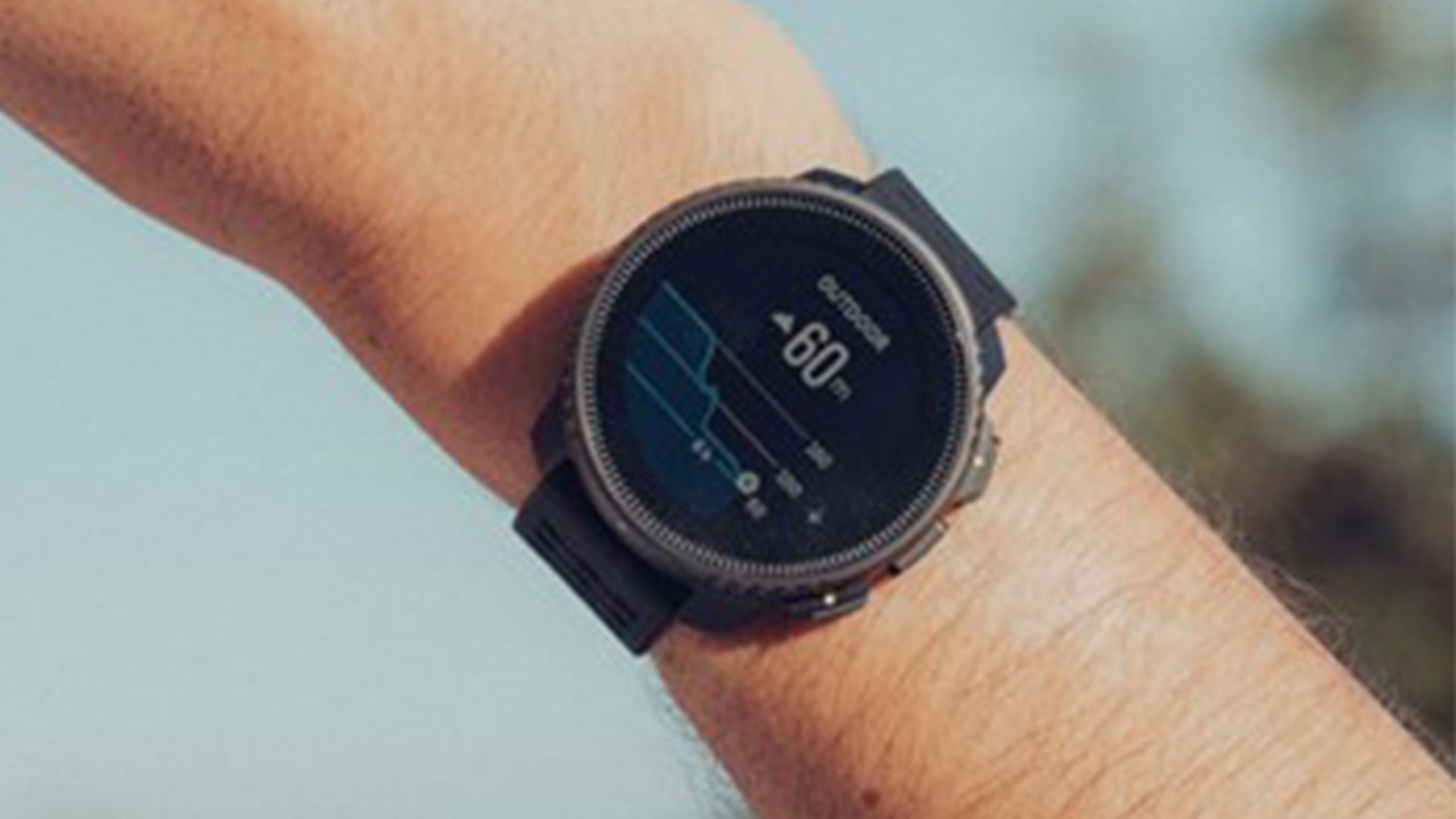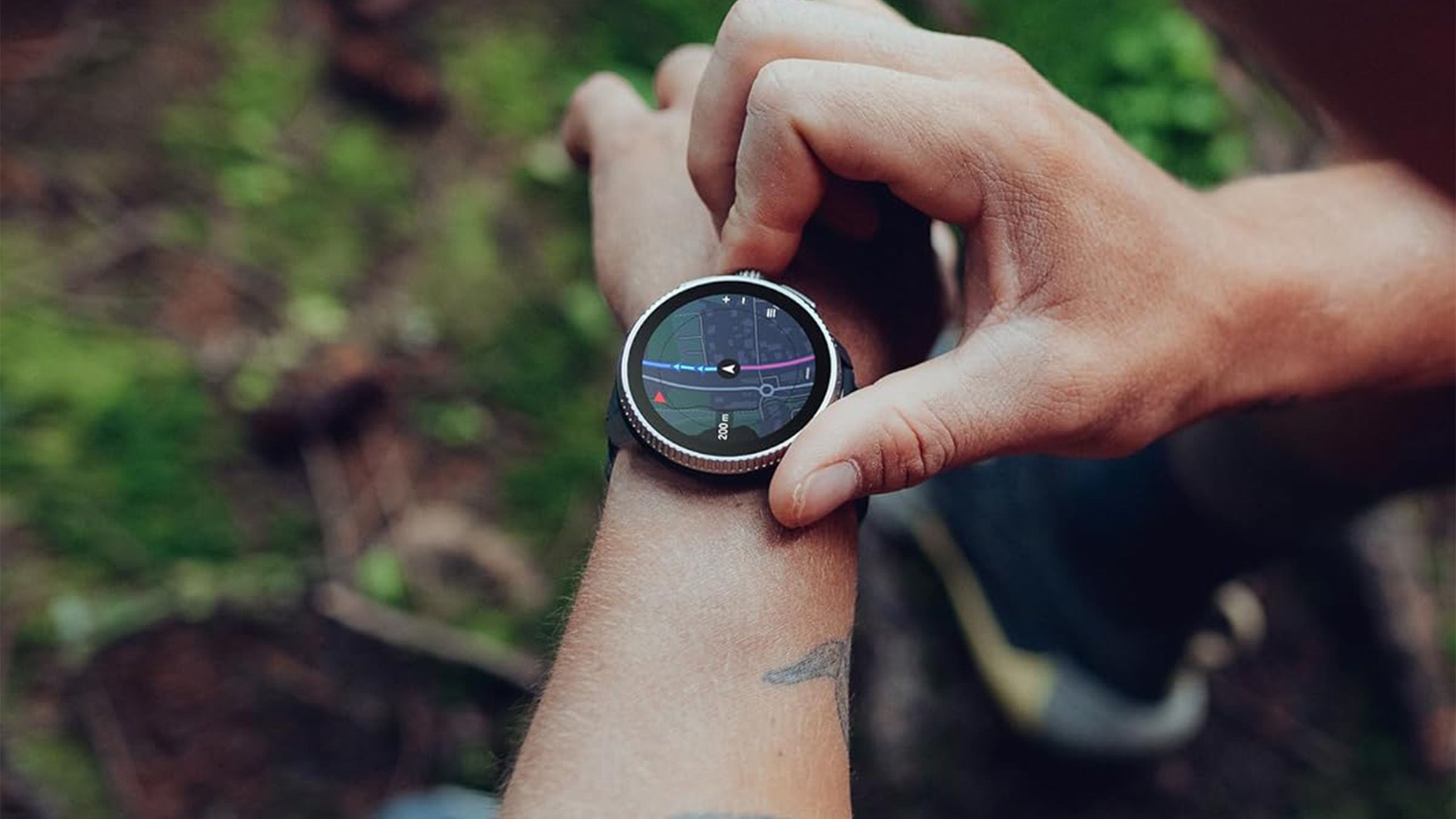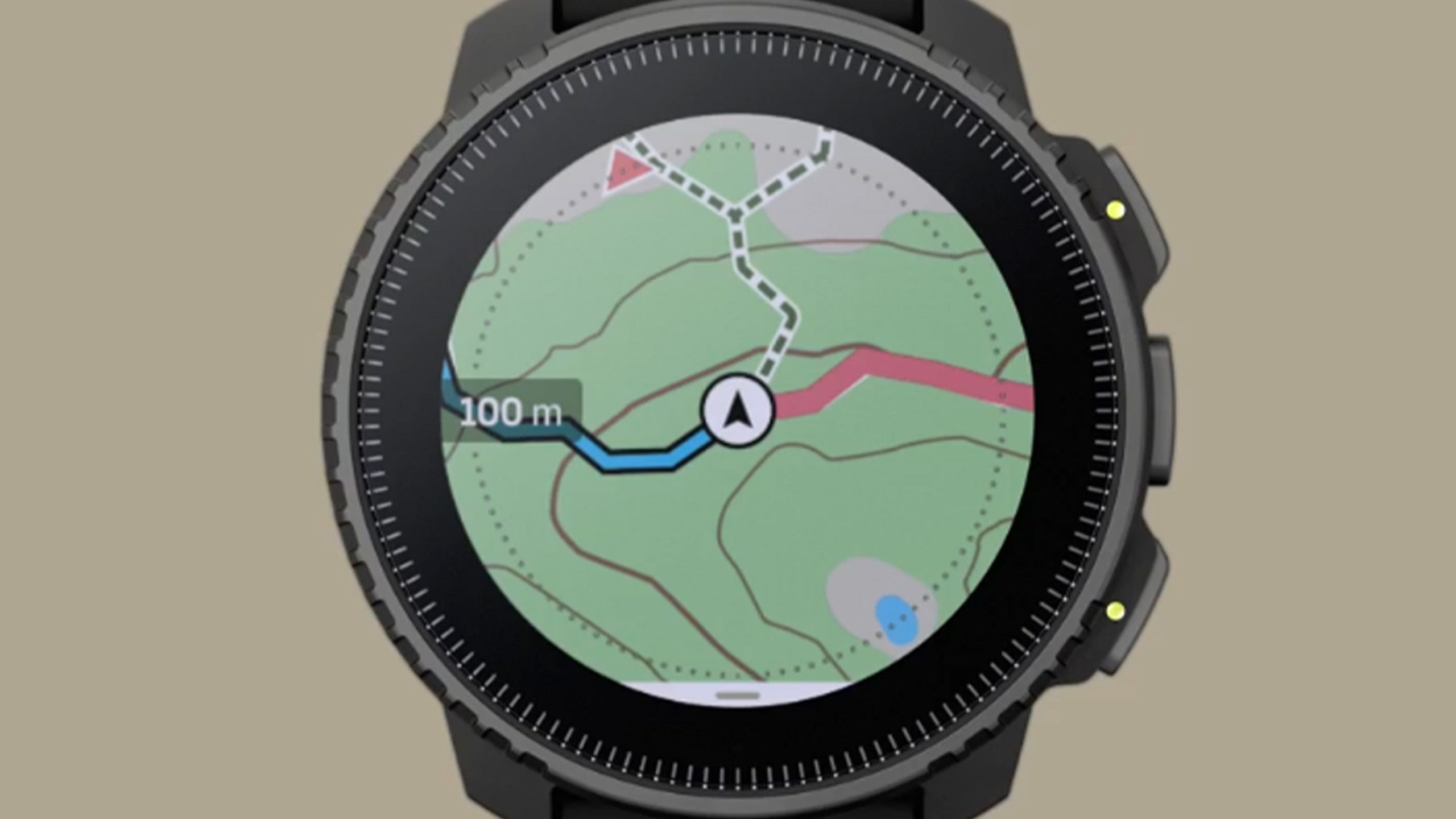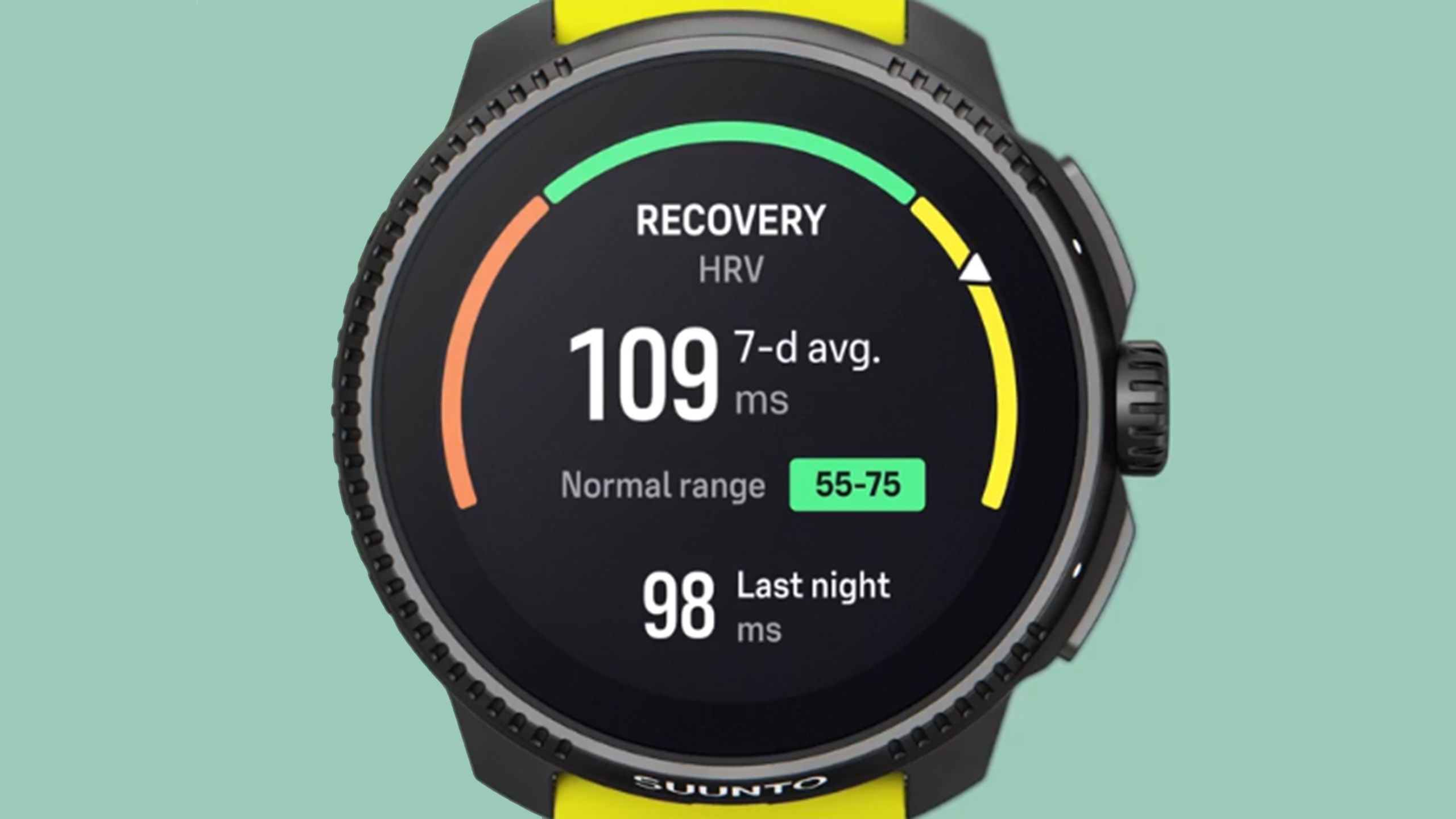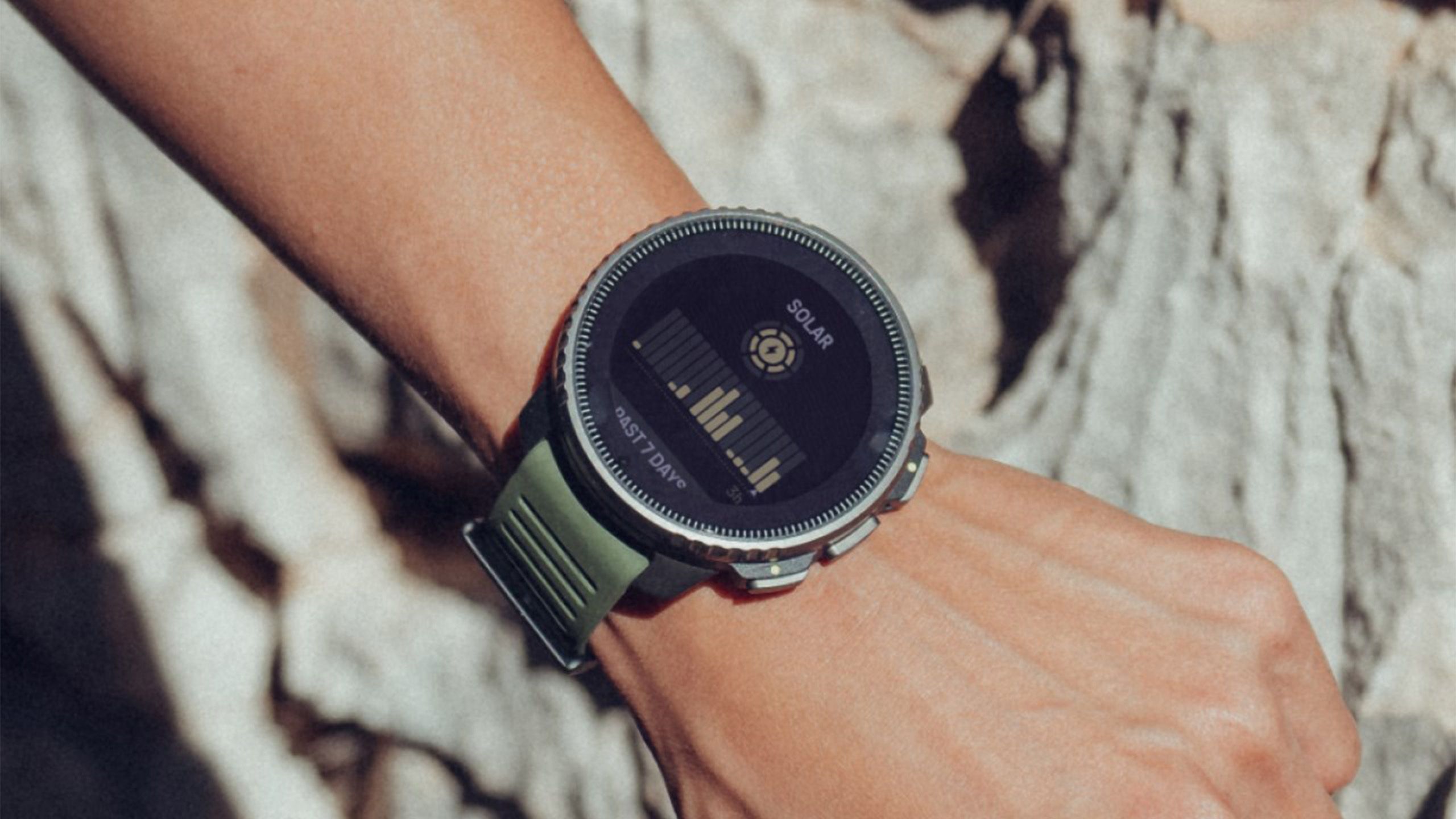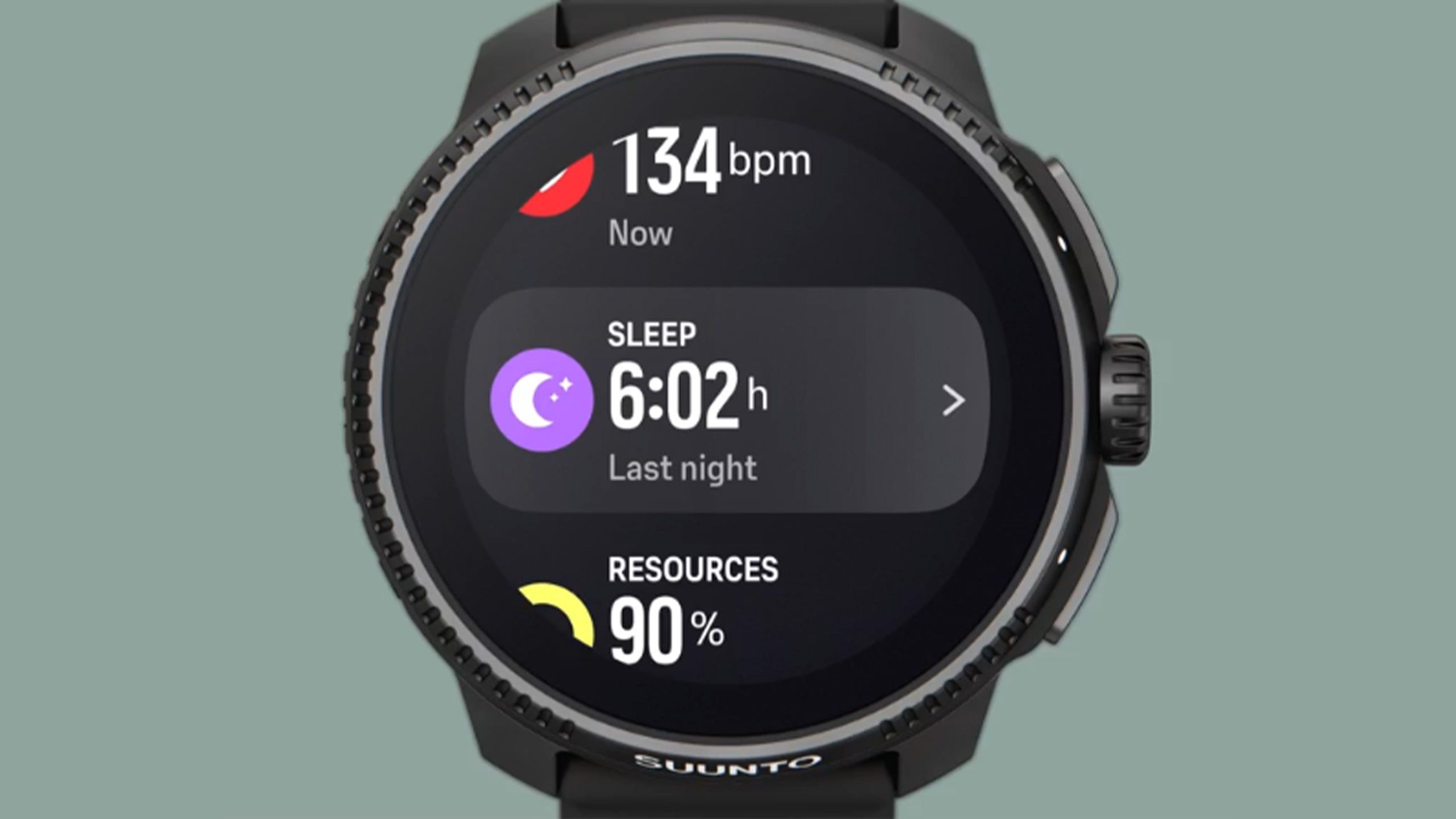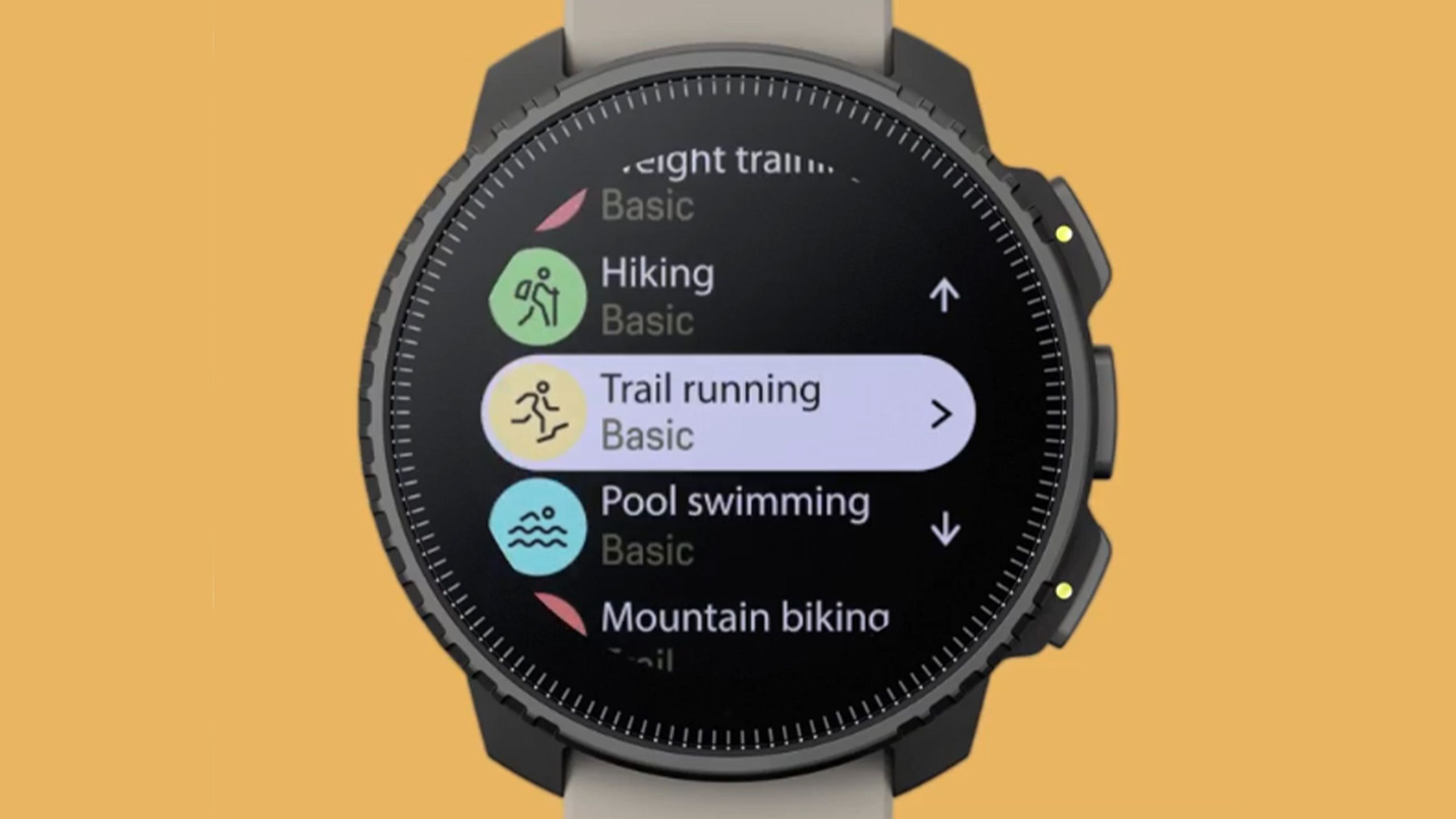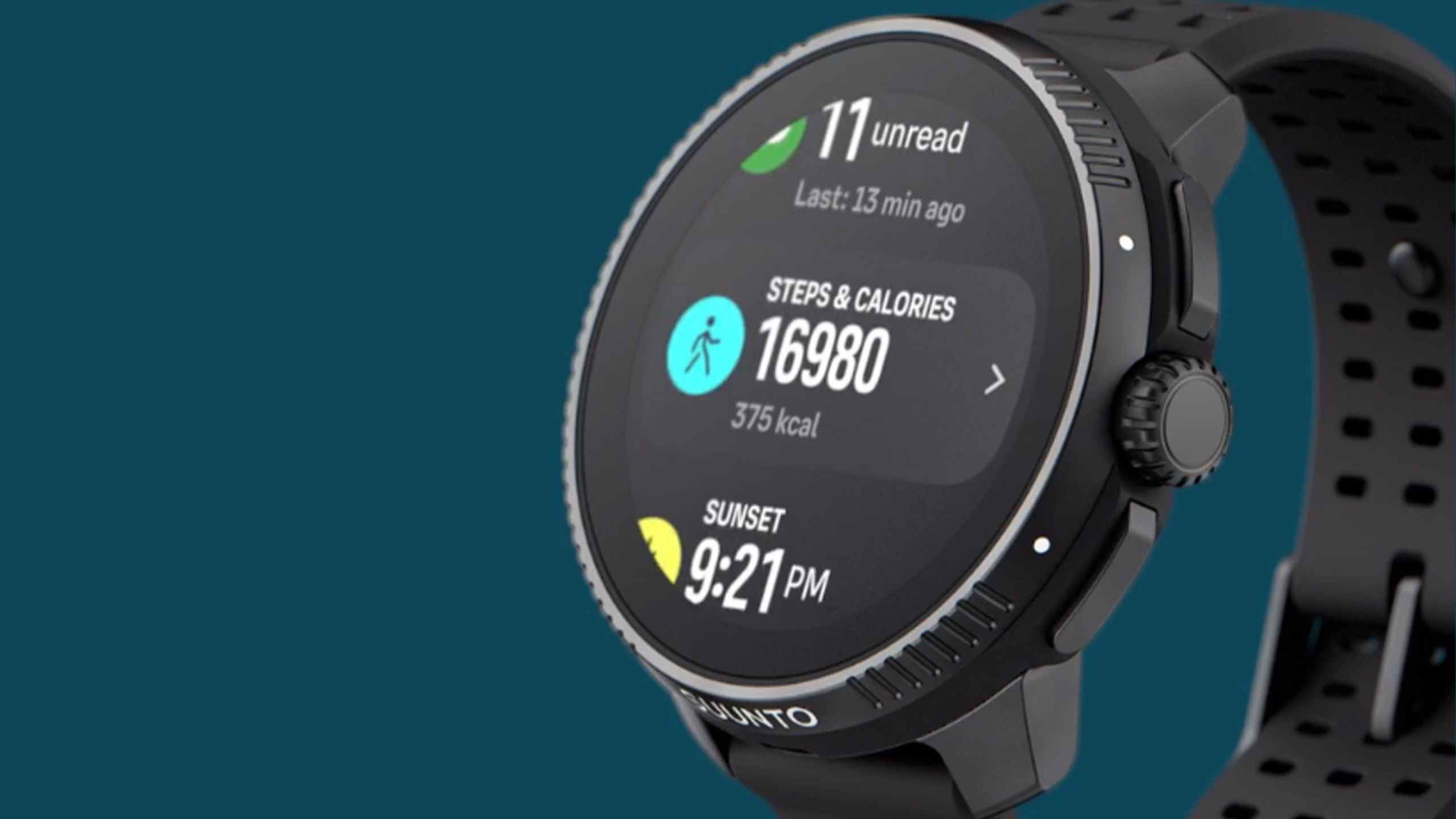-
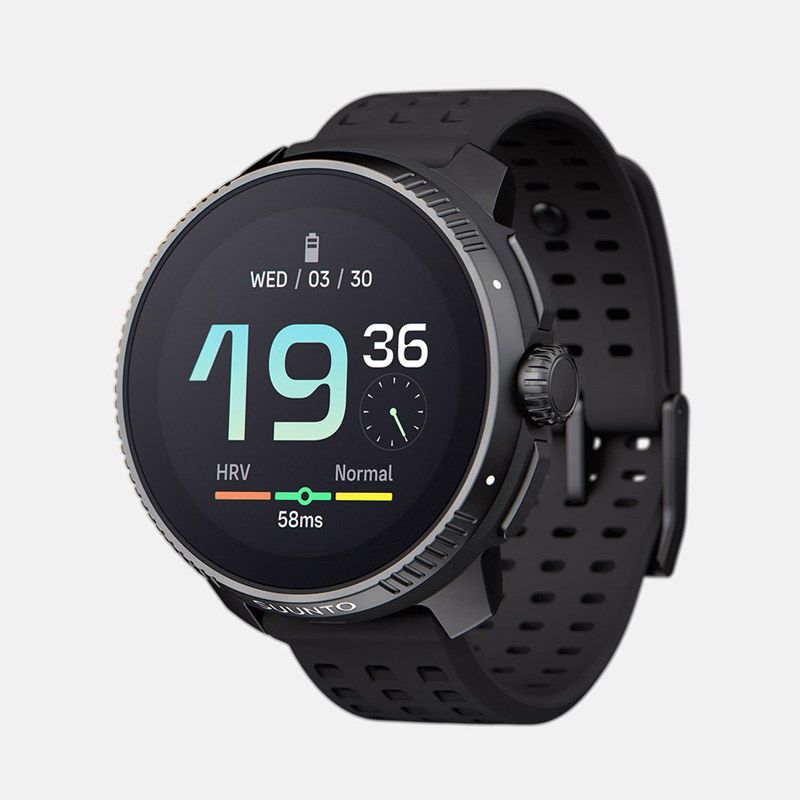
Suunto Race
The Suunto Race is a delightfully functional fitness tracker and smartwatch. It’s great at what it does, and it gets excellent battery life while still providing plenty of utility. It is also the cheaper of the two Suunto watches.
Pros- Bright, vibrant AMOLED touchscreen
- Up to two weeks of battery life
- Comprehensive sport tracking, sleep analysis and GPS
Cons- Vertical offers better battery life
- Expensive
-

Suunto Vertical
The Suunto Vertical offers more features, better battery life, and more powerful software. You’ll pay for the privilege, though, as the Vertical is one serious smartwatch and fitness tracker for serious workouts and outdoor use.
Pros- Up to 60 days of battery life
- Wealth of tracking options
- Onboard GPS is available with up to 32GB for offline maps
Cons- Much more expensive than Race model
- No AMOLED display like on the Race
When someone thinks of the best smartwatches, they usually think of brands like Apple, Samsung, and Google. While those companies do make some great wearables, they’re mostly designed for casual everyday use. They’re not meant to take along while freediving or other rugged, outdoor use, although the Apple Watch Ultra does come closer than most. That’s where companies like Suunto come in with the Suunto Race and the Suunto Vertical.
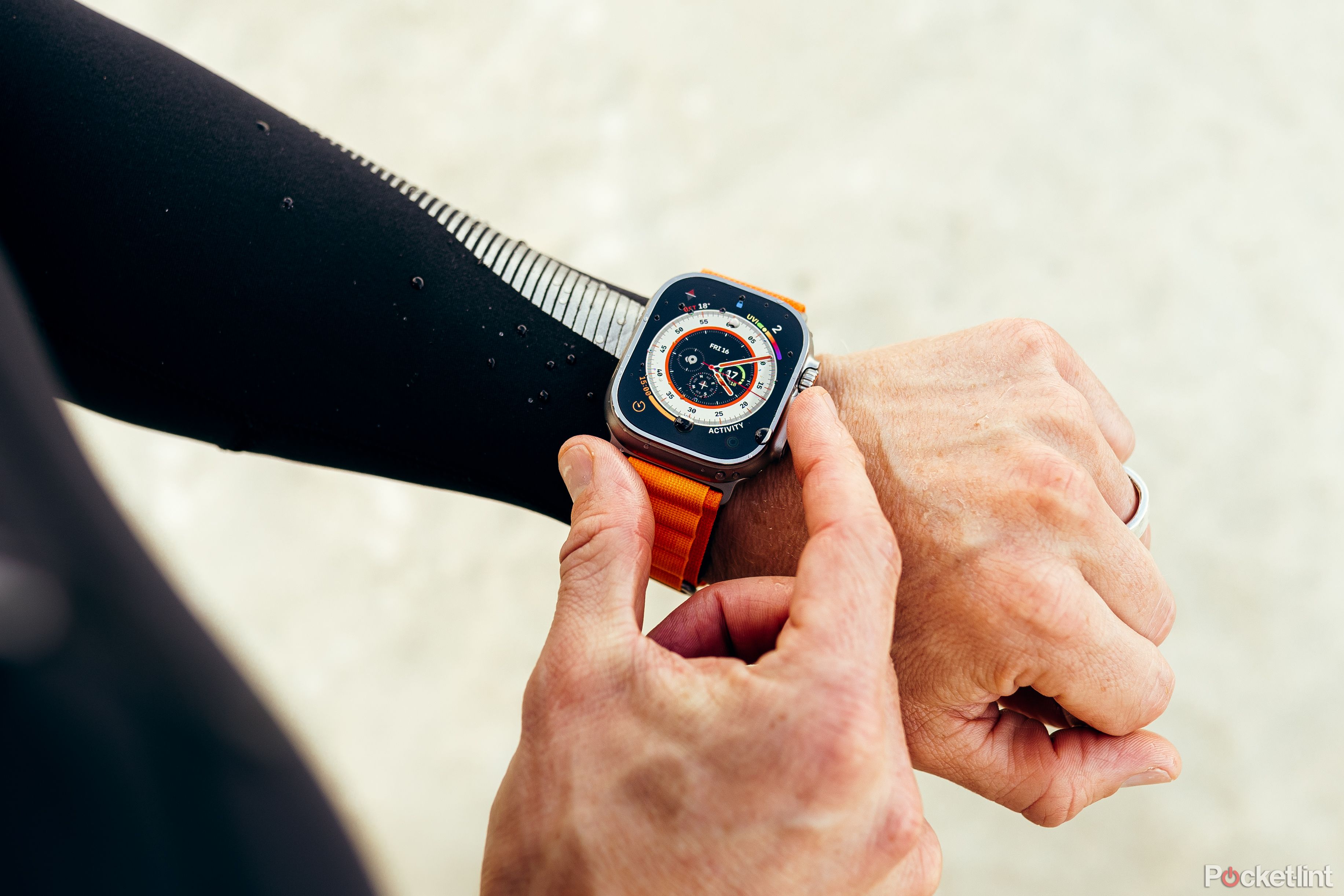
Best outdoor smartwatch: Expert tested and reviewed
The best durable smartwatches with GPS, long battery lives and adventure-ready features, according to our testing.
These two smartwatches aren’t the biggest talk of the town, but they can do a lot, including fitness tracking, sleep tracking, and plenty more. Since they don’t run advanced operating systems like Wear OS or watchOS, they can last for weeks on a single battery charge, all while taking a beating. If you’re shopping around for a solid, rugged smartwatch, let us help you figure out which one to get from these impressive Suunto models.
Pricing, availability and specs
These two smartwatches don’t come cheap. The Suunto Race starts at $449 for the stainless steel model and increases to $549 if you go with the titanium variant. It comes in five colors, including black, blue, tan, gray, and purple. It is readily available from Suunto directly or from Amazon if you prefer.
-
Suunto Vertical Suunto Race Brand Suunto Suunto Heart Rate Monitor Yes Yes Notification Support Yes Yes Battery Life 30 days (most features on) / 60 days (most features off) 12 days (most features on) / 26 days (most features off) Operating System Custom from Suunto Custom from Suunto SIM Support No No Case Material Glass fibre reinforced polyamide Glass fiber reinforced polymide Weather Yes Yes Smartphone Music Control Yes Yes Display 1.4-inch matrix (280 x 280 pixels) 1.43-inch AMOLED (466 x 466 pixels) Storage 32GB 16GB (Steel) / 32GB (Titanium) Connectivity Bluetooth Bluetooth Strap size 22mm 22mm Dimensions 49 x 49 x 13.6 mm (1.93 x 1.93 x 0.54 inches) 49 x 49 x 13.3mm (1.93 x 1.93 x 0.52 inches) Weight 86 grams (3.03 oz) 83 grams (2.93 oz) Workout detection Yes Yes Exercise modes Multisports / Running / Cycling / Swimming / Multiple sports modes Swimming / Cycling / Running / Multisports / Sport Modes Color options Black / Lime / Sand / Ruby (Steel) and Canyon / Black / Sand / Forest (Titanium Solar) Black, Midnight, Birch (Steel) / Charcoal / Amethyst (Titanium) Water resistance Waterproof up to 100m Waterproof up to 100m GPS Yes, with offline maps Yes, with offline maps Screen material Sapphire crystal Sapphire glass Body material Stainless steel / Titanium Steel / Titanium
Meanwhile, the Suunto Vertical starts at $629 for the stainless steel variant and increases in price to $629 if you opt for the Titanium Solar model. The watch comes in six colors, including black, lime green, purple, orange, and green. Like its stablemate, it’s available straight from Suunto or Amazon. Both watches come with a two-year warranty.
Suunto / Pocket-lint
Design and display
The AMOLED advantage
You would be forgiven if you mistook the Suunto Race and Vertical for one another. They look demonstrably similar. The Suunto Race is ever so slightly smaller and lighter than its veritable twin. Both of them sport 1.4-inch touchscreen displays, although the Race is 0.03 inches larger than the Vertical. You’ll never notice unless you have the two watches right next to each other. In short, these watches look very similar.
The biggest difference between the two is the side of the smartwatch case. The Vertical has three buttons in a vertical configuration, while the Race has a dial flanked by two buttons. In terms of case design, the two are very similar, although there are some small, subtle differences if you look at them side by side.
Suunto / Pocket-lint
Once the watches are switched on, however, then you’ll see one fairly big difference in this category. The Suunto Race has an all-around superior AMOLED display, while the Vertical sports a matrix-style display. The AMOLED is sharper, brighter, and offers better contrast than its more expensive sibling, which gives it a clear win here.
The Suunto Race has an all-around superior AMOLED display, while the Vertical sports a matrix-style display.
The Vertical isn’t without its bag of tricks. Neither watch carries an official IP certification, but both are water-resistant up to a depth of 100 meters. The Vertical does slightly better, though, since it’s rated to go freediving up to 10 meters, and the Race isn’t. So, while the Race has the better display, the Vertical has arguably better build quality.
Suunto / Pocket-lint
Performance and battery life
Solar power and performance
Performance and battery life are where these two watches start to go their separate ways. To start, both watches have much better battery life than you’d think. The Suunto Race puts up a very respectable 12 days with most of its features turned on and 26 days with most of its fitness tracking tools, such as heart rate, turned off. Under the same conditions, the Vertical dramatically tops that with 30 hours and 60 hours, respectively.
The Suunto Race puts up a very respectable 12 days with most of its features turned on and 26 days with most of its fitness tracking tools, such as heart rate, turned off. Under the same conditions, the Vertical dramatically tops that with 30 hours and 60 hours, respectively.
It is worth noting that both smartwatches can chew through the battery rather quickly if everything is turned on at once. In each watch’s Training mode with GPS enabled, the Race can run through its battery in as little as 40 hours while the Vertical can do a slightly better 60 hours at minimum. However, the Vertical has a cheat code via its Titanium Solar variant, which comes with built-in solar power.
Suunto / Pocket-lint
The solar version of the Vertical, dubbed the Titanium Solar, effectively doubles the estimated battery life in some cases. In time-only mode, which is the lowest power mode, Suunto says the Titanium Solar can do up to a year between charges if the user goes outside regularly. Thus, the Vertical wins the battery life test hands down.
In terms of performance, there isn’t much to talk about. Suunto is tight-lipped about the internal specs of both watches. Anecdotally, the Race seems to be a bit smoother and snappier overall, though the difference isn’t enough to write home about. Overall, in the performance and battery department, the Vertical, namely the Titanium Solar variant, is the better of the two watches.
Suunto / Pocket-lint
Fitness and health
Don’t expect Wear OS or watchOS-like integration
Both watches are designed to be used outdoors. Suunto advertises both the Vertical and the Race as performance-oriented watches with plenty of fitness and health tracking features. Both watches have the basics like a heart rate monitor, sleep tracking, and the ability to track a wide range of various exercises and activities. In addition, both watches can integrate with fitness tracking apps like Strava, TrainingPeaks, and other such services.
Since most of these things are software based and both watches run similar software, most of the features here are the same. Both can track your workout recovery times, stress, and things like that. The Vertical does pull ahead here with an adaptive training guidance feature that suggests changes mid-workout based on intensity and duration. Other than that one feature and some small tidbits throughout the software, both watches otherwise act similarly.
Suunto / Pocket-lint
Fortunately, Suunto’s features are, in general, pretty easy to use once you get used to them. The brand relies heavily on easy-to-read menu options and reasonably logical menu systems, so nothing is terribly difficult to find. It might require a bit of a learning curve if you’re switching off Wear OS or watchOS. Both watches can also do step tracking, calories burned, activity targets, activity history, calorie burn rate, and more.
The Race boasts over 95 pre-installed sports modes, so good luck trying to stump it. Both watches can connect to heart rate straps, some Bluetooth-capable smart bikes, and other equipment for more comprehensive workout statistics.
Each watch can keep track of sports as well. The Race boasts over 95 pre-installed sports modes, so good luck trying to stump it. The Vertical boasts similar features there as well. In addition, both watches can connect to heart rate straps, some Bluetooth-capable smart bikes, and other equipment for more comprehensive workout statistics.
Suunto / Pocket-lint
Software and other features
Former Fitbit users will have an idea of what they’re getting
While they are both marketed as smartwatches, both of them act more like fitness trackers. They have a perfunctory OS installed on the watch that is similar in terms of usability and functionality to older Fitbits and similar trackers. The Vertical and Race both connect to your smartphone via Bluetooth through Suunto’s mobile apps on iOS and Android. From there, you can use your phone to customize the watches, view various settings, and more comfortably view your various health and workout stats.
Neither watch has SIM support, but both can connect to GPS. Both should have reasonably similar performance, even if the Vertical can connect to one additional satellite. Both have a long list of additional features like offline maps support, global heatmaps, POI navigation, and outdoor terrain maps. Both watches also come equipped with altimeters to make better use of those outdoor terrain maps.
Suunto / Pocket-lint
Outside of fitness tracking and GPS, both watches can do basic things with your smartphone. They can both control music playing on your phone and view notifications. It is important to note that only Android phones can send what Suunto calls “predefined replies to incoming messages.” Both watches update through the cloud via the smartphone app, and both can be updated automatically.
Unlike the other categories, where there is a clear winner, both watches should function roughly the same. The Race might be a bit snappier and more pleasing to use thanks to its AMOLED display, but there are few software disparities between the two watches. The Race comes with less storage, but the titanium version gets boosted to 32GB for offline map storage, which the Vertical has on both the steel and titanium variants. The Vertical is better on paper, but in real life, there’s barely a difference.
Suunto Race vs Suunto Vertical: Which smartwatch is best for you?
It’s a tough call. Suunto did a good job of making sure neither watch was overtly better than the other. In general, the biggest differences come in screen tech and battery life. The Race wins with its better screen, but the Vertical swipes back with hugely better battery life. Most of the rest of the features are either the same or at least so similar that it only applies in niche scenarios.
With that in mind, we think the Suunto Race is the better smartwatch. You get most of what the Vertical offers at around $200 less. You’ll also get a slightly more snappy performance and an objectively better AMOLED display. Yes, the battery life is only between two and four weeks, but honestly, most people will be around a charge at some point, voiding the discrepancy almost entirely.

Suunto Race
Editor’s Choice
Now, this is one of those scenarios where we’re recommending the mechanically inferior watch over the objectively superior one. The only two benefits that the Race has over the Vertical are price and its AMOLED screen. The Vertical meets or exceeds the Race’s capabilities in literally every other metric. Plus, if you spring for the Titanium Solar, the battery gets otherworldly. Thus, if money is no object, and you don’t mind a slightly less sharp display with less contrast, the Suunto Vertical is the one to get.
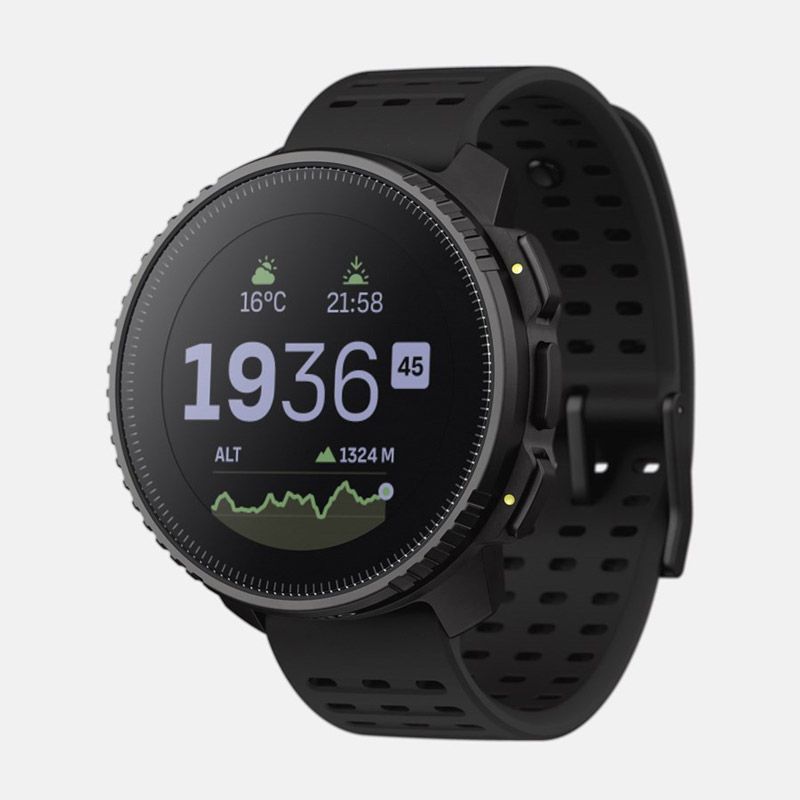
Suunto Vertical
Premium Pick
No matter which watch you pick, both are going to do what they’re designed to do very well. Most of the people shopping for something like the Vertical or the Race are doing things like hiking, mountain climbing, snowboarding, and things like that where traditional smartwatches may not survive the experience. However, if all you’re doing is going for the occasional jog, working out of the office, and living a fairly typical life, you may be better served with a more traditional smartwatch like the Apple Watch 9 or the Google Pixel Watch 2.



